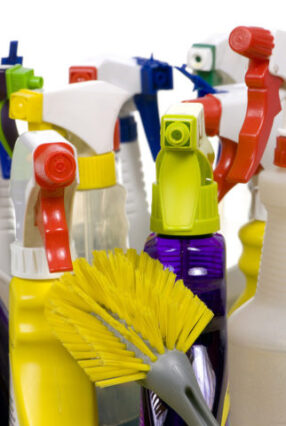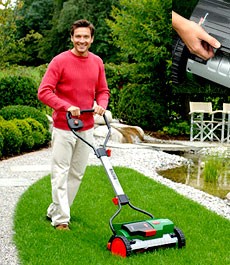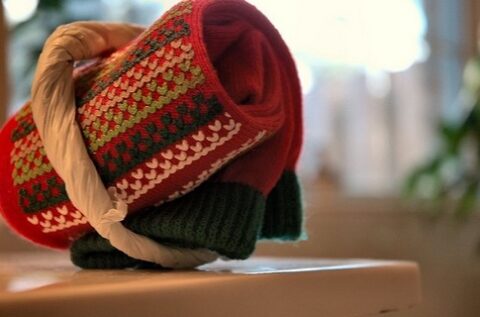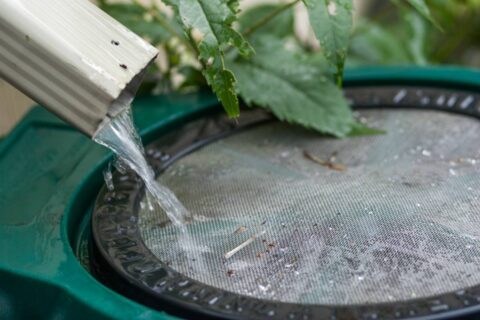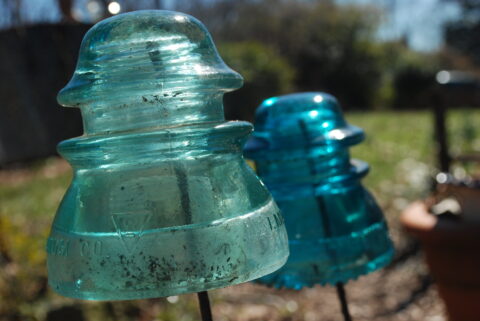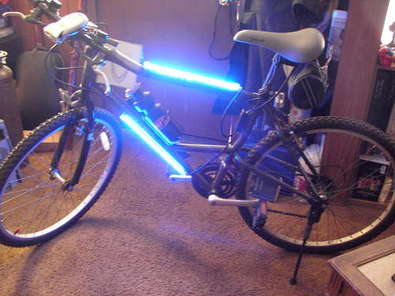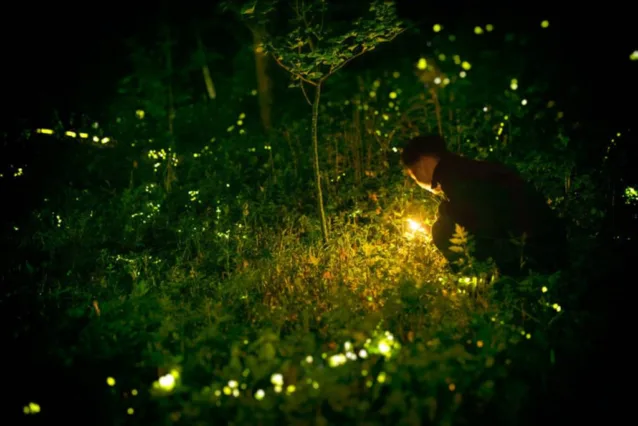 The weather is warming, flowers are blooming, and birds are chirping away.
The weather is warming, flowers are blooming, and birds are chirping away.
Yep, it’s time for… Spring cleaning?!?!
Ugh, it’s no fun coming out of hibernation and having to clean up the cave, but since it’s a necessary evil, we might as well go about cleaning green, don’t you think?
However, since living green has become big business these days, it’s becoming increasingly challenging to decide what food, personal care products, and practices are actually green and not just greenwashed.
The same challenge exists in selecting green cleaning products. What’s REALLY safe, non-toxic, and the like?
Hopefully we can get a good start on how to find safe, non-toxic, and green cleaning products to replace all those harmful ones under the kitchen sink right now.
“Cleaning products were responsible for nearly 10% of all toxic exposures reported to the U.S. poison control centers, accounting for more than 206,000 calls, over half of which concerned children under the age of six.”
Now that’s frightening!
Top 12 Hazardous Household Chemicals
According to an article on the Consumer Law Page, these are the worst 12 chemicals to be on the lookout for in your home:
- AIR FRESHENERS: Most air fresheners interfere with your ability to smell by coating your nasal passages with an oil film, or by releasing a nerve deadening agent. Known toxic chemicals found in an air freshener: Formaldehyde: Highly toxic, known carcinogen. Phenol: When phenol touches your skin it can cause it to swell, burn, peel, and break out in hives. Can cause cold sweats,convulsions, circulatory collapse, coma and even death.
- AMMONIA: It is a very volatile chemical, it is very damaging to your eyes, respiratory tract and skin.
- BLEACH: It is a strong corrosive. It will irritate or burn the skin, eyes and respiratory tract. It may cause pulmonary edema or vomiting and coma if ingested. WARNING: never mix bleach with ammonia it may cause fumes which can be DEADLY.
- CARPET AND UPHOLSTERY SHAMPOO: Most formulas are designed to over power the stain itself, they accomplish the task but not without using highly toxic substances. Some include: Perchlorethylene: Known carcinogen damages liver, kidney and nervous system damage. Ammonium Hydroxide: Corrosive, extremely irritable to eyes, skin and respiratory passages.
- DISHWASHER DETERGENTS: Most products contain chlorine in a dry form that is highly concentrated. # 1 cause of child poisonings, according to poison control centers.
- DRAIN CLEANER: Most drain cleaners contain lye, hydrochloric acid or trichloroethane. Lye: Caustic, burns skin and eyes, if ingested will damage esophagus and stomach. Hydrochloric acid: Corrosive, eye and skin irritant, damages kidneys, liver and digestive tract. Trichloroethane: Eye and skin irritant, nervous system depressant; damages liver and kidneys.
- FURNITURE POLISH: Petroleum Distillates: Highly flammable, can cause skin and lung cancer. Phenol: (see Air fresheners, Phenol.) Nitrobenzene: Easily absorbed through the skin, extremely toxic.
- MOLD AND MILDEW CLEANERS: Chemicals contained are: Sodium hypochlorite: Corrosive, irritates or burns skin and eyes, causes fluid in the lungs which can lead to coma or death. Formaldehyde: Highly toxic, known carcinogen. Irritant to eyes, nose, throat, and skin. May cause nausea, headaches, nosebleeds, dizziness, memory loss and shortness of breath.
- OVEN CLEANER: Sodium Hydroxide (Lye): Caustic, strong irritant, burns to both skin and eyes. Inhibits reflexes, will cause severe tissue damage if swallowed.
- ANTIBACTERIAL CLEANERS: May contain: Triclosan: Absorption through the skin can be tied to liver damage.
- LAUNDRY ROOM PRODUCTS: Sodium or calcium hypocrite: Highly corrosive, irritates or burns skin, eyes or respiratory tract. Linear alkylate sulfonate: Absorbed through the skin. Known liver damaging agent. Sodium Tripolyphosphate: Irritates skin and mucous membranes, causes vomiting. Easily absorbed through the skin from clothes.
- TOILET BOWL CLEANERS: Hydrochloric acid: Highly corrosive, irritant to both skin and eyes. Damages kidneys and liver. Hypochlorite Bleach: Corrosive, irritates or burns eyes, skin and respiratory tract. May cause pulmonary edema, vomiting or coma if ingested. Contact with other chemicals may cause chlorine fumes which may be fatal.
Your Green Cleaning Guide
DIY Cleaning Products
Maybe the cheapest and greenest way to clean your home would be to make your own cleaning solutions from simple, proven, tried, and true ingredients you probably have in your home right now.
Here are the best all-natural DIY green cleaning products that you already have in your cupboard. The best part: they really work on 6 tough cleaning problems!
Important: See which household cleaners you should NOT mix together and why. (More here.)
While we’re talking about other helpful sites, be sure to also check out TreeHugger’s guide to green cleaning.
Twist Things Up
Thanks to GreenUpgrader, one thing I’ll be doing soon is picking up some Twist sponges and sponge cloths at my not-so-local Whole Foods.
These sponges and cloths (with sponge like absorption) are 100% biodegradable, and they allegedly disappear in 7 weeks if buried in soil.
Their packaging is also 100% biodegradable, and also has directions for folding it into a mini bird feeder on the back. Nice!
Air It Out
 So far in April I’ve only had my heat on for 2 days and haven’t run my A/C at all. It’s been perfect weather for opening up the windows and doors and getting some fresh air circulating.
So far in April I’ve only had my heat on for 2 days and haven’t run my A/C at all. It’s been perfect weather for opening up the windows and doors and getting some fresh air circulating.
Did you realize that the air inside your home is probably 2-5 times more polluted than the air outside?
When we use products with all those chemicals, track in toxins from outside and introduce them to our living environment in other ways.
Where do you expect them to go if you never swap out that toxified air with some fresh air?
What are some of your favorite ways to clean green? What products do you use? What ingredients do you look out for?
I think every little step toward living green is an awesome one… but eco-snobbery sucks! My goal is to help newbies learn the most important steps toward living green — individually and collectively. Personally, I strive to have as little impact as possible on Planet Earth while I'm here.
